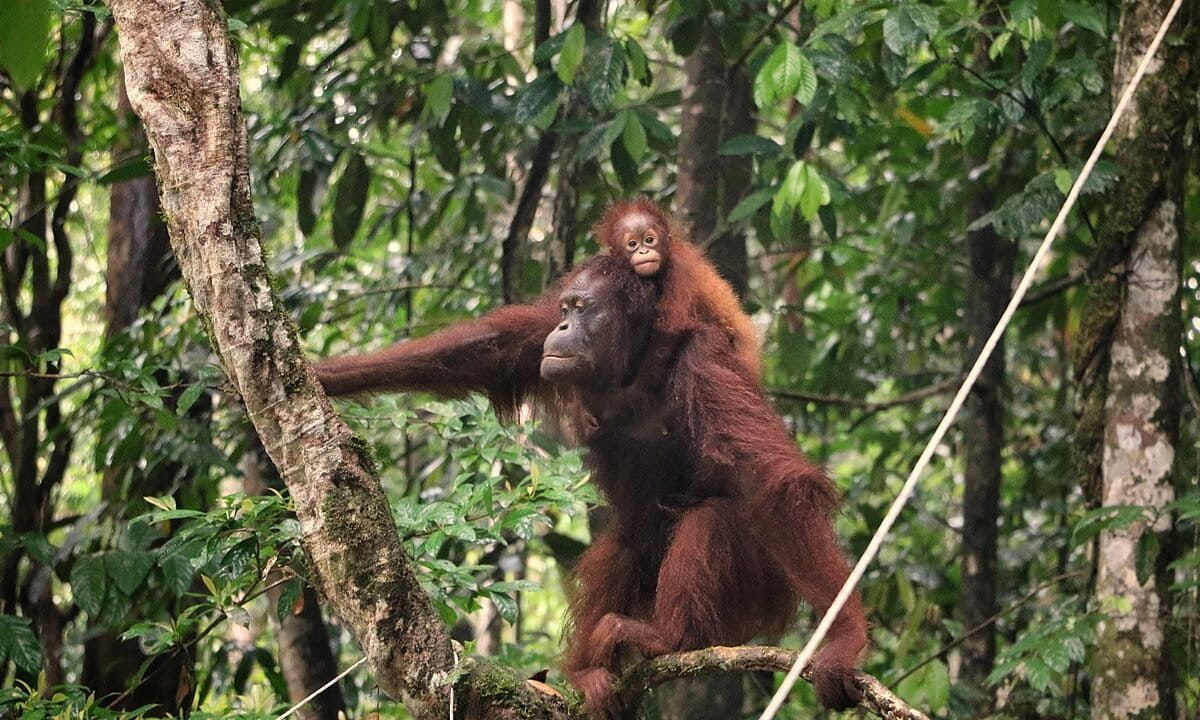[ad_1]
Despite years of research into their complex behavior and intelligence, orangutans remain critically endangered on the islands of Borneo and Sumatra, where they’re endemic.
Mongabay has extensively covered the threats they face from habitat degradation and what studies say about how human activities affect them.
This World Orangutan Day, on Aug. 19, we take a look at how this intelligent great ape is faring in a world quickly changing due to human activity.
Most endangered
In June, Mongabay founder Rhett Butler wrote about the new report “Primates in Peril: The World’s 25 Most Endangered Primates.” The list, which includes the Tapanuli orangutan (Pongo tapanuliensis), aims to highlight the primate species most in need of conservation intervention.
Before the Tapanuli orangutan was formally described in 2017, there were only two distinct species of orangutans: the Sumatran (Pongo abelii) and Bornean orangutans (Pongo pygmaeus).
The report says that “high levels of habitat conversion and fragmentation, along with illegal hunting and poaching” caused an “extensive population decline” in Tapanuli orangutans over the last 150 years, leaving just 700 or so individuals in Indonesia’s Batang Toru Forest.
Habitat loss
Mongabay’s Hans Nicholas Jong reported in March of possible mining expansion in Batang Toru, the only known habitat of Tapanuli orangutans. Almost 200,000 people signed a petition opposing the planned development of hundreds of hectares of this forest habitat.
In January, Jong wrote that illegal deforestation for oil plantations is rising to record levels in Sumatra, according to U.S.-based NGO Rainforest Action Network. Of concern is Rawa Singkil Wildlife Reserve, a UNESCO World Heritage Site and home to Sumatran orangutans.
In Borneo, an Indonesian company has continued planting acacia, used to produce pulp and paper, despite a 2024 government order to stop logging and start restoring the damaged peatlands, part of Bornean orangutan habitat. Jong reported that any habitat loss could push the already critically endangered Bornean orangutans to extinction.
In April, Jong reported that Indonesian company PT Equator Sumber Rezeki is planning to expand its palm oil plantation in western Borneo. A quarter of the concession overlaps with orangutan habitat.
Behavior and adaptation
Despite such concerning news, local groups are finding ways to help orangutans, including building canopy bridges to avoid traffic accidents.
Mongabay also recently reported on a study that looked into sleep deprivation among orangutans, which can potentially weaken their immune system and affect their mental performance.
Another study examined ape resilience and how they adjust to human-caused disruptions and threats, such as mining, agriculture, urbanization and logging. Mongabay’s Charles Mpaka reported in March that while the apes are able to survive in the short term, adaptation such as changing nesting patterns can cause long-term dangers for orangutans when they put them in conflict with humans.
Banner image of an adult and baby orangutan at Betung Kerihun National Park in Indonesian Borneo, by Sabar Minsyah via Wikimedia Commons (CC BY-SA 4.0).
[ad_2]
Source link
#Ongoing #threats #habitat #loss #haunt #great #apes
